Recent Articles
Popular Makes
Body Types
2017 Nissan Versa Road Test and Review

2017 Nissan Versa sedan exterior front angle ・ Photo by Nissan
Common wisdom says that buyers on a budget will get the most bang for their buck by buying used—but then there’s the Nissan Versa, a new car that sells for the price of a decent used sedan. The Versa is America’s least-expensive car, and its appeal goes beyond its budget price—but is it the car for you? Let’s drive it and find out.
A Deal on Wheels
The Nissan Versa has been America’s cheapest car for nearly a decade; the current iteration dates from 2012 and not much has changed, including the price. With a sticker price starting at $12,855—that’s $11,990 plus the $865 destination fee—there isn't a more inexpensive new car on the American market. Mid-level Versas list for around $16.500, and even a top-of-the-line model lists for $18,145—nearly $1500 less than a bare-bones Honda Civic sedan.
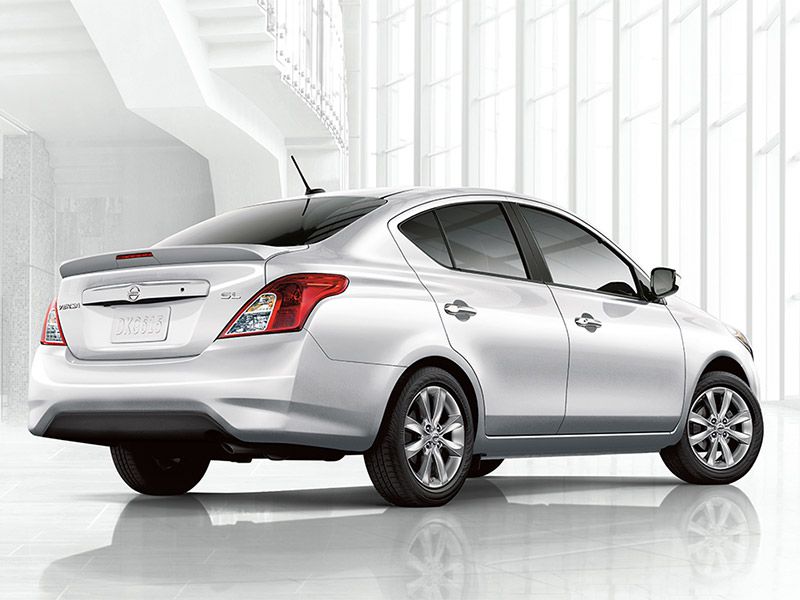
Photo by Nissan
How much do you get for $13K?
So how much car do you really get for thirteen thousand bucks? As you’d expect, the Nissan Versa S is pretty well stripped; it gets a manual transmission, crank-down windows, manual-locking doors, and steel wheels with plain plastic hubcabs. And yet the Versa S does come with standard air conditioning and a Bluetooth-compatible speakerphone. There’s a stereo, albeit a basic one with four speakers and a CD player. Color choice are muted—white, silver, gray, black, or dark blue—but the basic Versa does get a chrome grille, though black mirrors and body-color B-pillars (the post between the two side windows) mark this as the cheaper Versa. Not that all Versas are so dire: As you move up the model line, they add more features such as cruise control, keyless entry and ignition, better stereos, alloy wheels, a rearview camera, and even a navigation system, not to mention snazzier paint colors including red and bright blue.
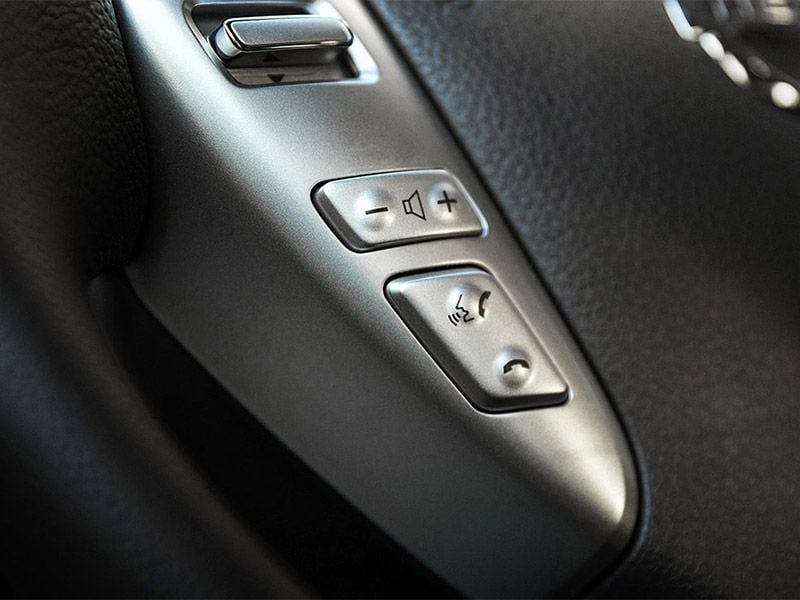
Photo by Nissan
Space on Sale
What’s more surprising is how much interior room the Versa offers, especially when you consider that it competes against some of the smallest cars on the market. The front seat offers adequate leg room and head room, but the back seat is the real surprise: It offers plenty of stretch-out space, though the seat itself is somewhat flat and featureless. And the trunk provides 14.9 cubic feet of storage space, as much as many midsize sedans, though the bare-bones model doesn't get a fold-down back seat. That may be the Versa’s best attribute next to its budget price: As cheap as it is, this Nissan has all the space of a proper family sedan.
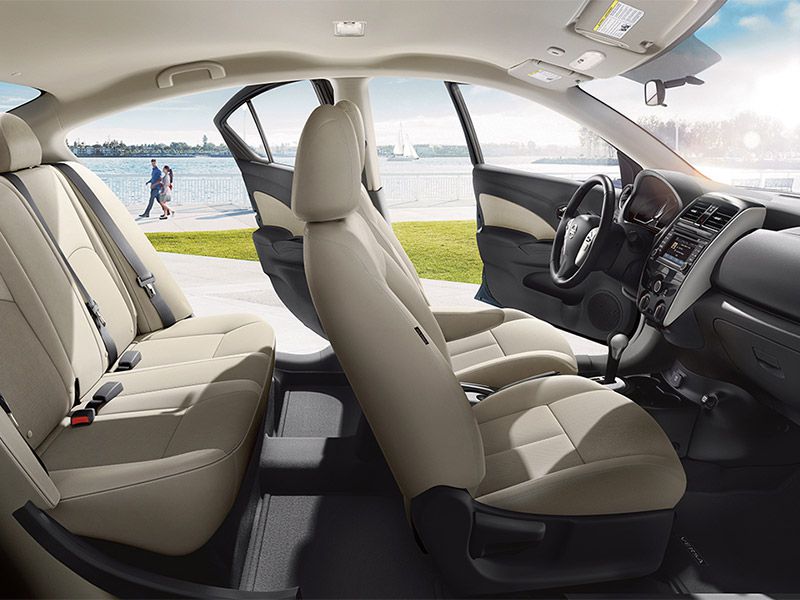
Photo by Nissan
Cheap Interior
In terms of interior décor, the basic Versa S is pretty, well, basic, with a plain black dash and rather nondescript seat upholstery. SV and SL models get upgraded cloth on the seats and door trim panels, and more bright trim. What all Versas share is an admirably simple control layout, with easy-to-read gauges, straightforward stereo controls, and simple three-dial climate controls. We prefer cars that have a simple, distraction-free driving environment, and that’s something the Versa delivers. Unfortunately, they also share a dashboard made of cheap-looking (and cheap-feeling) plastic. Twist the cable-operated fan and temperature dials, and the feel is old-school mechanical, parts selected for low cost rather than good feel.
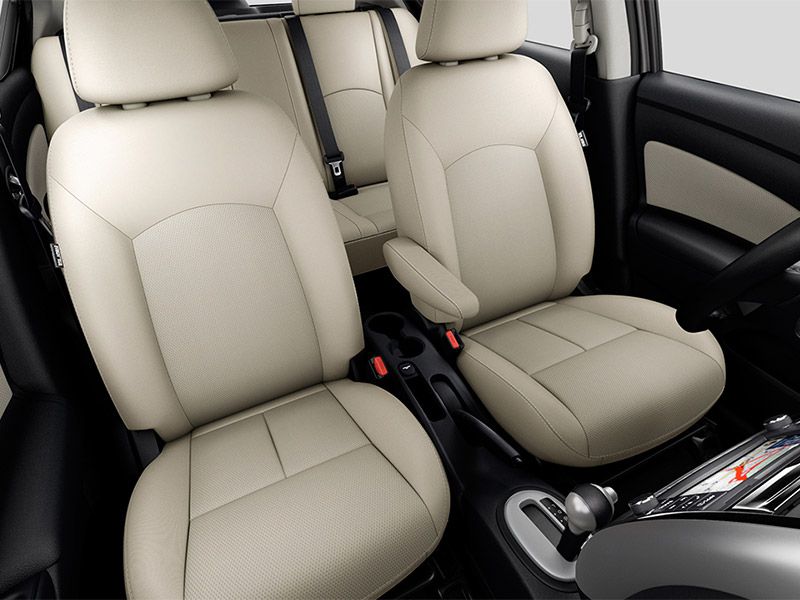
Photo by Nissan
Good engine, great fuel economy.
All Versas are powered by a 1.6-liter engine that produces 109 horsepower and 107 lb.-ft. of torque. The most basic version gets a 5-speed manual transmission, while everything else gets a continuously-variable automatic transmission, or CVT. (Nissan offered an old-tech 4-speed automatic in previous years; it’s since been dropped, and good riddance.) This engine offers decent performance and good acceleration to highway speeds. It’s a bit noisy, especially with the manual transmission, which is plagued by gear whine, but fuel economy is very good: EPA ratings are 27 mpg city and 36 mpg highway with the manual transmission and 31/39 with the CVT. We’ve spent plenty of time with both transmissions, and real-world fuel economy is just as good: We always seem to average in the mid-30s.
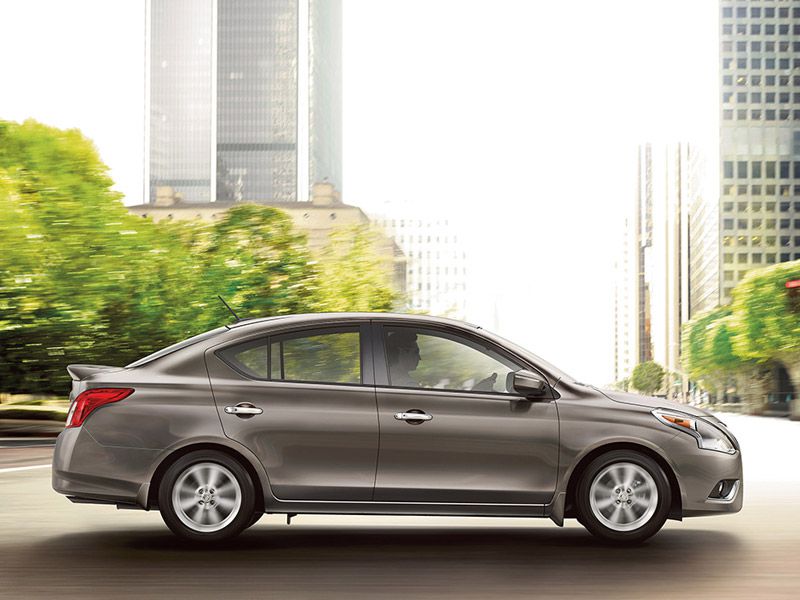
Funny, you don’t drive like a cheap car.
So how does the Versa drive? We don’t expect a Porsche-like driving experience for 14 grand, but the Versa does the job just fine. It offers reasonable power, light steering (power assistance is standard even in the basic Versa S), and a comfortable ride. Though it’s not especially quiet, the Versa handles bad bumps and rough pavement better than we expect, devoid of the cheap-sounding clunks and clanks we have experienced in other budget cars. Handling is fine, with the Versa responding accurately, if not exactly crisply, to emergency swerves. Again, we can’t promise the fun you’ll get from a Mazda3, but a week of cruising around in a bare-bones Nissan Versa had us wondering why people spent an average of $34,000 or so for their cars. Here’s a 4-door that costs less than half that much, and it does the job just fine.
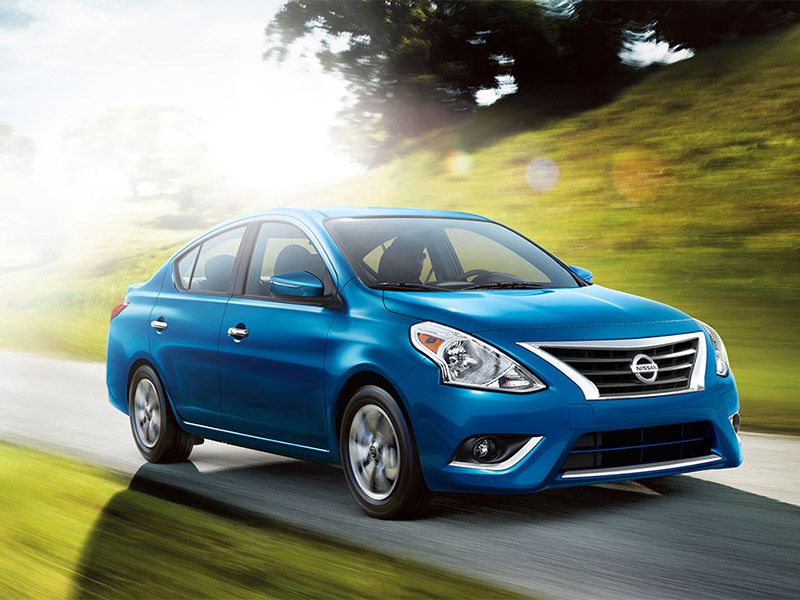
Photo by Nissan
Cheap, but Is It safe?
What about safety in a car this inexpensive? The 2017 Nissan Versa gets the basics: Six airbags (two in front, two for the front seats, and two side-curtains), electronic stability control, and antilock brakes. The Versa does without advanced safety hardware like pedestrian detection and automatic braking, but its crash-test scores are respectable. The federal government (NHTSA) gives it 4 out of 5 stars; the Insurance Institute for Highway Safety (IIHS) hasn’t crash-tested the 2017 Versa, but the nearly identical 2016 model scored Good (the best rating) in all of the IIHS’s more realistic crash tests. (The one exception is the difficult small-overlap crash tests; the 2016 model wasn’t tested, but the 2015 rated Poor, the worst rating.)
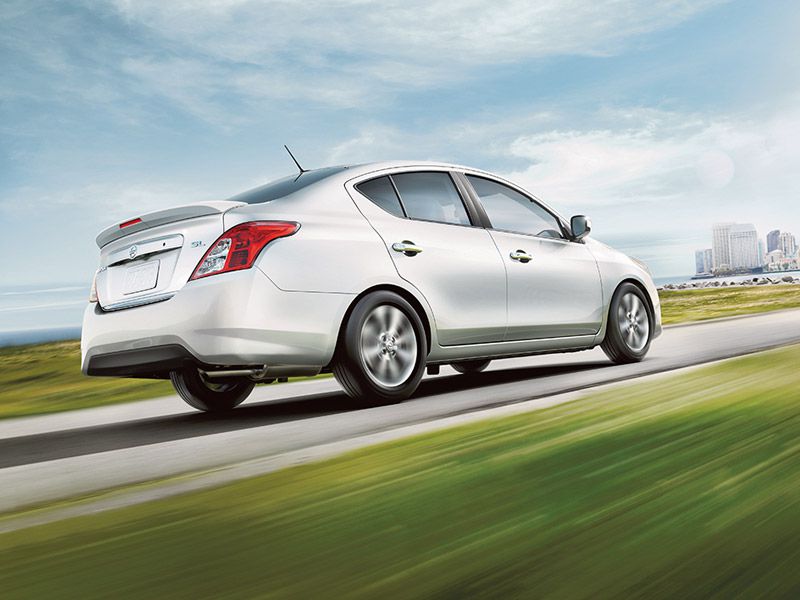
Photo by Nissan
Not that the versa is perfect…
Lest you think we are completely head-over-heels for the little Versa, there are things about which we will complain. The Versa is a downright homely little car, both outside and in, and interior décor can be downright depressing, even in the higher-end models. And while we don’t mind doing without most creature comforts, the lack of power locks is a real pain in the neck if you have a family, especially considering that the only key slot is in the driver’s door. If you have kids, you have to leave them on the sidewalk (or take them with you) while you unlock the driver’s door then lean over to unlock the others. The Versa S also lacks a remote trunk release and a fold-down rear seatback, which means that locking your keys in the trunk—something that is almost impossible to do in most new cars—is a real possibility in the Versa.
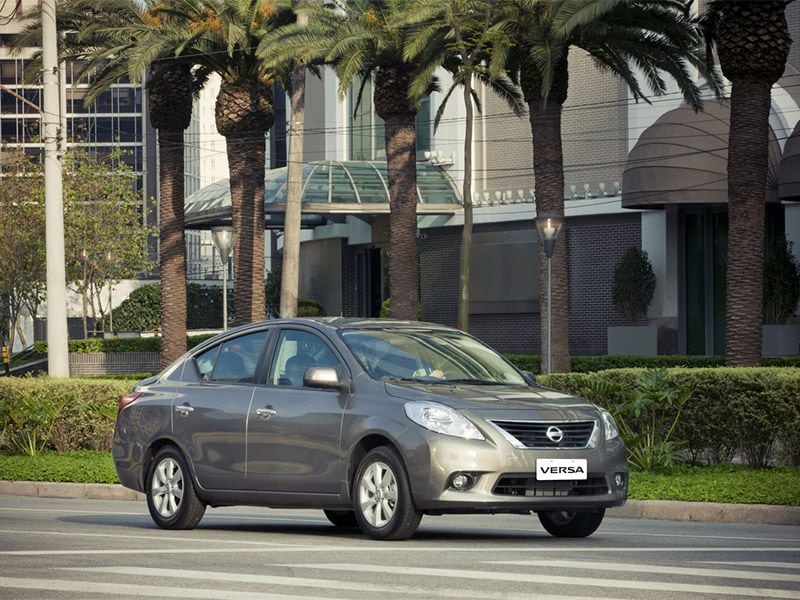
Photo by Nissan
Automatic for the People
Another complaint: The cheapest Versa model is limited to those who can drive a manual transmission; if you can’t, you’ll have to step up to the S Plus model, which adds not only an automatic transmission but cruise control and a rear spoiler. It lists for $15,025, which is a $2170 price premium over the basic Versa S. Most automakers charge around $1000 for an automatic transmission. (We’d advise budget buyers to consider learning to drive a manual transmission. It’s good fun, and the Versa has a light clutch and an easy shifter that makes it a pleasure to use, even in slow traffic.)

Photo by Nissan
Versa Versus the Competition
So how does the Versa compare to other cheap cars? Next up from the Versa sedan in terms of price is the Mitsubishi Mirage. It comes with more features than the Versa, including power windows, doors and locks, and it offers a decent amount of interior space given its small size, though it’s not as family-friendly as the Nissan. It’s also significantly slower and noisier. Chevrolet’s 5-door Spark hatchback feels more substantial and grown-up than either of these two, and it protects its occupants with 10 airbags. But it’s a significantly smaller car than the Versa, and nowhere near as family-friendly. The Honda Fit is a far more practical and family-friendly car, arguably one of the best subcompacts on the market, but with a starting price of $16,965, it’s a much more expensive proposition than the Versa. And what about buying used? Sure, you can get a much nicer car for a $14,000–$17,000 budget—but such a car is bound to have a few years and miles on it, and that means it may be close to the end (or completely out) of its factory warranty, and will be closer to needing expensive maintenance such as tire or brake replacements. With a Versa, everything is new—including the 3-year/36,000-mile bumper-to-bumper warranty.
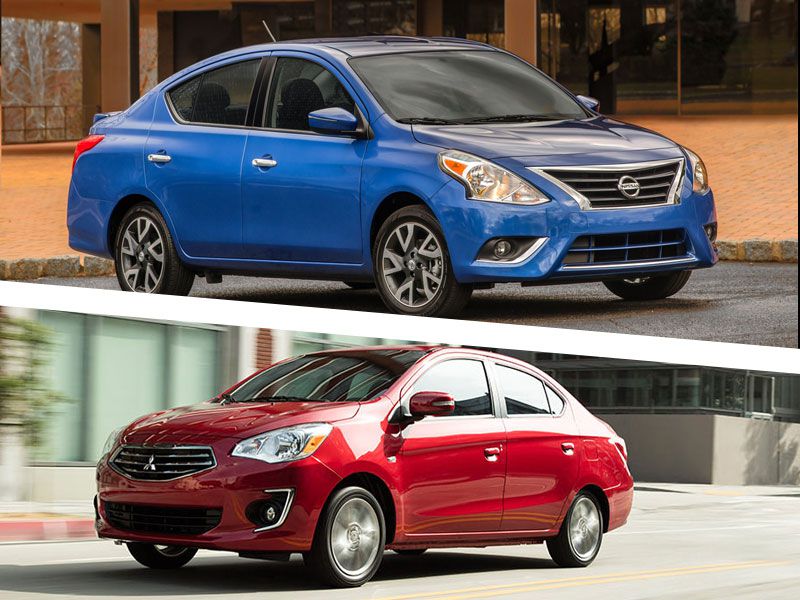
Photo by Nissan and Mitsubishi